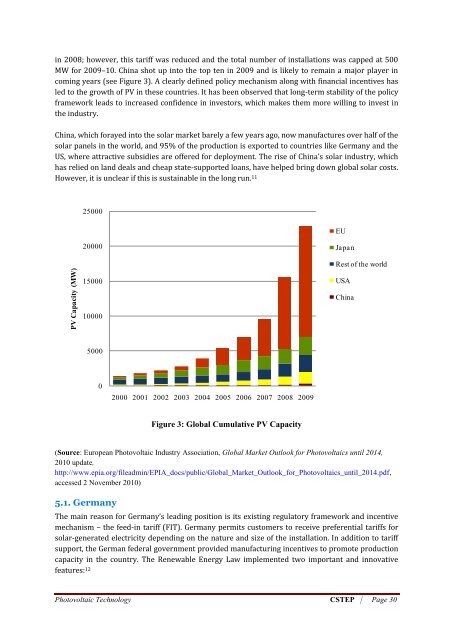Harnessing Solar energy, Options for India
A study on harnessing solar energy options for India was conducted recently by Shakti Sustainable Energy Foundation, Climate works Foundation and SSN foundation. Supporting this study it has been concluded that solar energy can play a big role in providing electricity to rural areas and thus has been included in India’s rural electrification policy. See more at: http://shaktifoundation.in/report/harnessing-solar-energy-options-for-india/
A study on harnessing solar energy options for India was conducted recently by Shakti Sustainable Energy Foundation, Climate works Foundation and SSN foundation. Supporting this study it has been concluded that solar energy can play a big role in providing electricity to rural areas and thus has been included in India’s rural electrification policy. See more at: http://shaktifoundation.in/report/harnessing-solar-energy-options-for-india/
You also want an ePaper? Increase the reach of your titles
YUMPU automatically turns print PDFs into web optimized ePapers that Google loves.
PV Capacity (MW)<br />
in 2008; however, this tariff was reduced and the total number of installations was capped at 500<br />
MW <strong>for</strong> 2009–10. China shot up into the top ten in 2009 and is likely to remain a major player in<br />
coming years (see Figure 3). A clearly defined policy mechanism along with financial incentives has<br />
led to the growth of PV in these countries. It has been observed that long-term stability of the policy<br />
framework leads to increased confidence in investors, which makes them more willing to invest in<br />
the industry.<br />
China, which <strong>for</strong>ayed into the solar market barely a few years ago, now manufactures over half of the<br />
solar panels in the world, and 95% of the production is exported to countries like Germany and the<br />
US, where attractive subsidies are offered <strong>for</strong> deployment. The rise of China’s solar industry, which<br />
has relied on land deals and cheap state-supported loans, have helped bring down global solar costs.<br />
However, it is unclear if this is sustainable in the long run. 11<br />
25000<br />
EU<br />
20000<br />
Japan<br />
Rest of the world<br />
15000<br />
USA<br />
China<br />
10000<br />
5000<br />
0<br />
2000 2001 2002 2003 2004 2005 2006 2007 2008 2009<br />
Figure 3: Global Cumulative PV Capacity<br />
(Source: European Photovoltaic Industry Association, Global Market Outlook <strong>for</strong> Photovoltaics until 2014,<br />
2010 update,<br />
http://www.epia.org/fileadmin/EPIA_docs/public/Global_Market_Outlook_<strong>for</strong>_Photovoltaics_until_2014.pdf,<br />
accessed 2 November 2010)<br />
5.1. Germany<br />
The main reason <strong>for</strong> Germany’s leading position is its existing regulatory framework and incentive<br />
mechanism – the feed-in tariff (FIT). Germany permits customers to receive preferential tariffs <strong>for</strong><br />
solar-generated electricity depending on the nature and size of the installation. In addition to tariff<br />
support, the German federal government provided manufacturing incentives to promote production<br />
capacity in the country. The Renewable Energy Law implemented two important and innovative<br />
features: 12<br />
Photovoltaic Technology CSTEP | Page 30

















